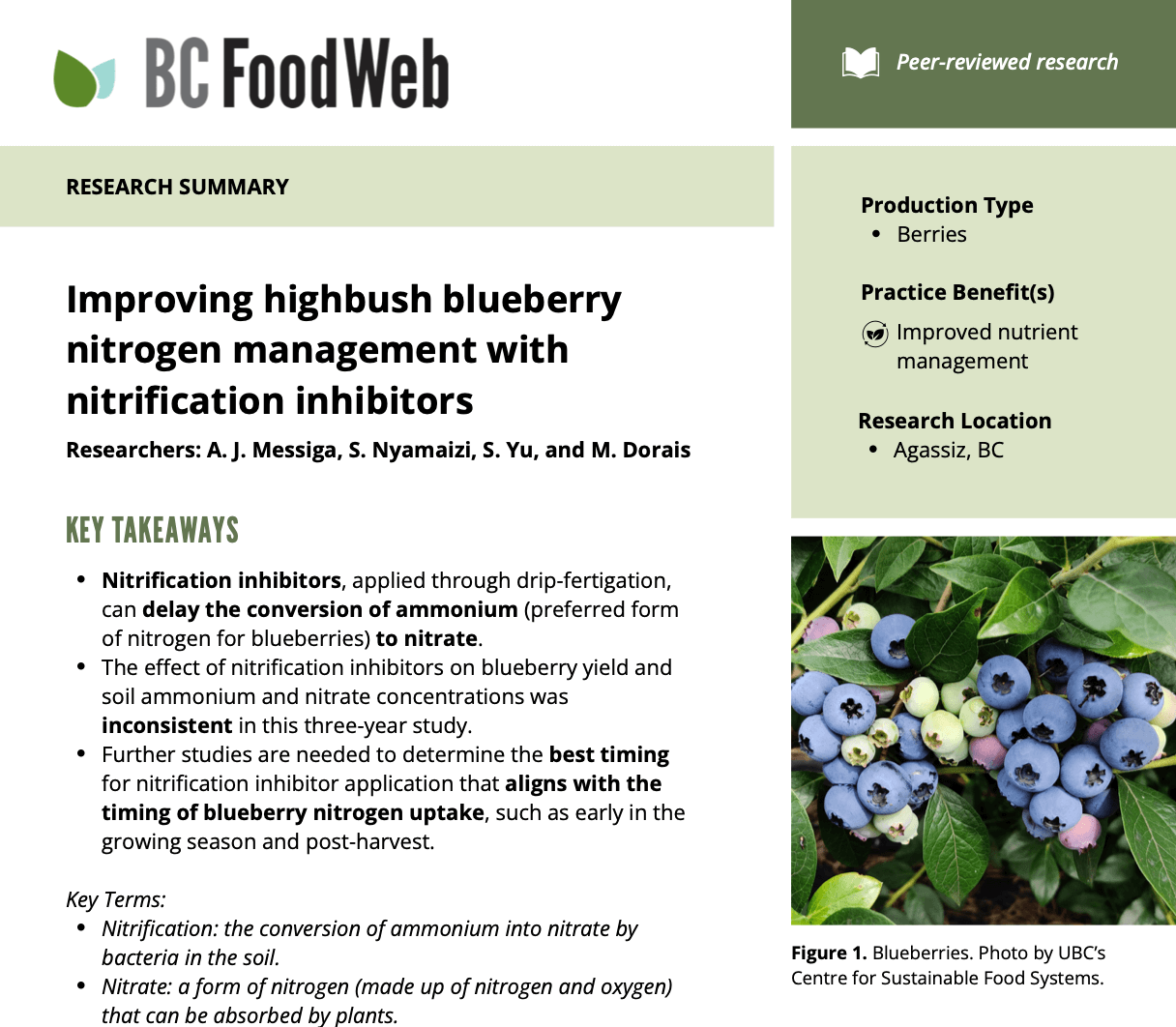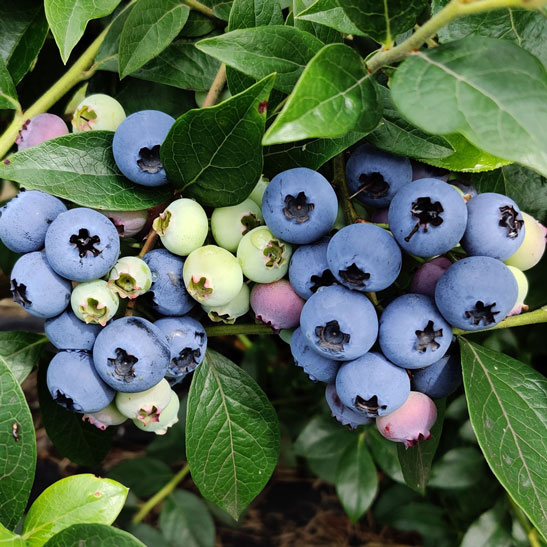Improving highbush blueberry nitrogen management with nitrification inhibitors
Introduction
The objective of this study was to assess the effects of nitrification inhibitors, applied with two nitrogen fertilizer rates (60 vs. 120 kg N/ha) and two fertigation systems (suspended vs. buried), on blueberry yield and soil nitrate and ammonium levels.
Click the link above to read the research brief.
About this Brief
This brief was prepared by Juliana Cao from the BC Food Web team with the help of Aimé J. Messiga and is based on the following scientific journal article:
Messiga, A. J., Nyamaizi, S., Yu, S., & Dorais, M. (2021). Blueberry yield and soil mineral nitrogen response to nitrogen fertilizer and nitrification inhibitors under drip-fertigation systems. Agronomy, 2144(11). https://doi.org/10.3390/agronomy11112144
Key Findings
- Nitrification inhibitors, applied through drip-fertigation, can delay the conversion of ammonium (preferred form of nitrogen for blueberries) to nitrate.
- The effect of nitrification inhibitors on blueberry yield and soil ammonium and nitrate concentrations was inconsistent in this three-year study.
- Further studies are needed to determine the best timing for nitrification inhibitor application that aligns with the timing of blueberry nitrogen uptake, such as early in the growing season and post-harvest.



